FOR MORE FOLKDAYS CONTENT, SEE MY BLOG.
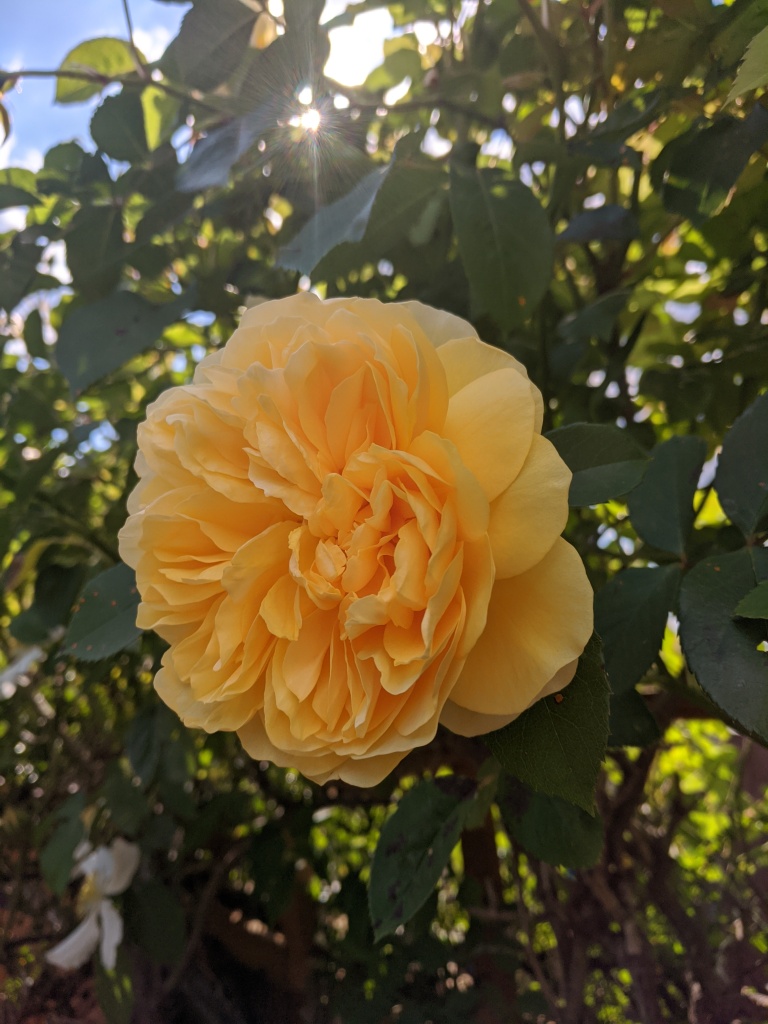
I’ve been working with roses quite a bit recently, as I’ve been making pigment from rose petals and using them to paint the flowers themselves. They’ve crept into my life in all sorts of other ways, too: I’ve recently written a piece about thorns (and the Anglo-Saxon rune ᚦ, ‘thorn’); meanwhile my research into foraging for a different creative project lead me to look a bit closer at rosehips.
As one might imagine, based on their popularity, roses are steeped in all sorts of lore, from how they were created and how they got their colours, to their meanings and associations. There’s plenty out there to read (as ever, links below); this post will focus on the aspects I find most fascinating!
While roses have become a popular emblem in Western world, and appear in many myths arising in the West, their origin actually begins in the East. First cultivated in Persia, these flowers were almost immediately given a mythology: one of the principal Hindu goddesses, Lakshmi, was said to have been created from 108 large and 1,008 small rose petals. The cultivation of roses spread across many continents, and in many cultures these flowers continued to be associated with the gods, and by extension, royalty.
Roses appear to have been in use from as early as the 8th century BC. In Homer’s Iliad, rose oil was said to have been used to anoint the body of Hector, Prince of Troy, before burial. Likewise, in 5th century BC Egyptian tombs, rose balm anointed the dead, and dried petals were tucked inside the wrappings of mummified bodies. As well as simply improving the smell, flowers carried with them the association of life, growth, and rebirth. Roses were the flowers of the Egyptian goddess of love, Isis, so by sealing them in tombs, they also signified the love of mourners for their dead.
Just as the Egyptians had Isis, the Greek goddess of love, Aphrodite, was also associated with roses. At her birth, the sea foam Aphrodite sprung from turned to white roses, symbolising her purity; when she passionately pursued Adonis, she cut her feet on the rose’s thorns and red roses were created to symbolise desire. In Roman myth, the goddess of flowers Flora created the rose from the body of a nymph; other gods contributed by adding life, nectar, scent, and fruit to Flora’s flowers. The rose’s thorns were arrows from Cupid’s bow. Cupid was the son of Venus, the Roman goddess of love; the rose became more closely associated with Venus when, in return for keeping her lovers a secret, the flower was gifted to Harpocrates, god of silence.
As this story tells, the rose became a symbol for silence and secrets, as well as love. One Roman belief was that the flowers themselves stored secrets amidst their tightly wound petals. Roses were thus hung overhead during meetings, and the attendees were said to be sub rosa (‘under the rose’): bound to an oath of silence as to all matters raised in that room. A relic of this belief can still be seen today, in the stucco roses which decorate the ceilings of banquet rooms in some grand residences.
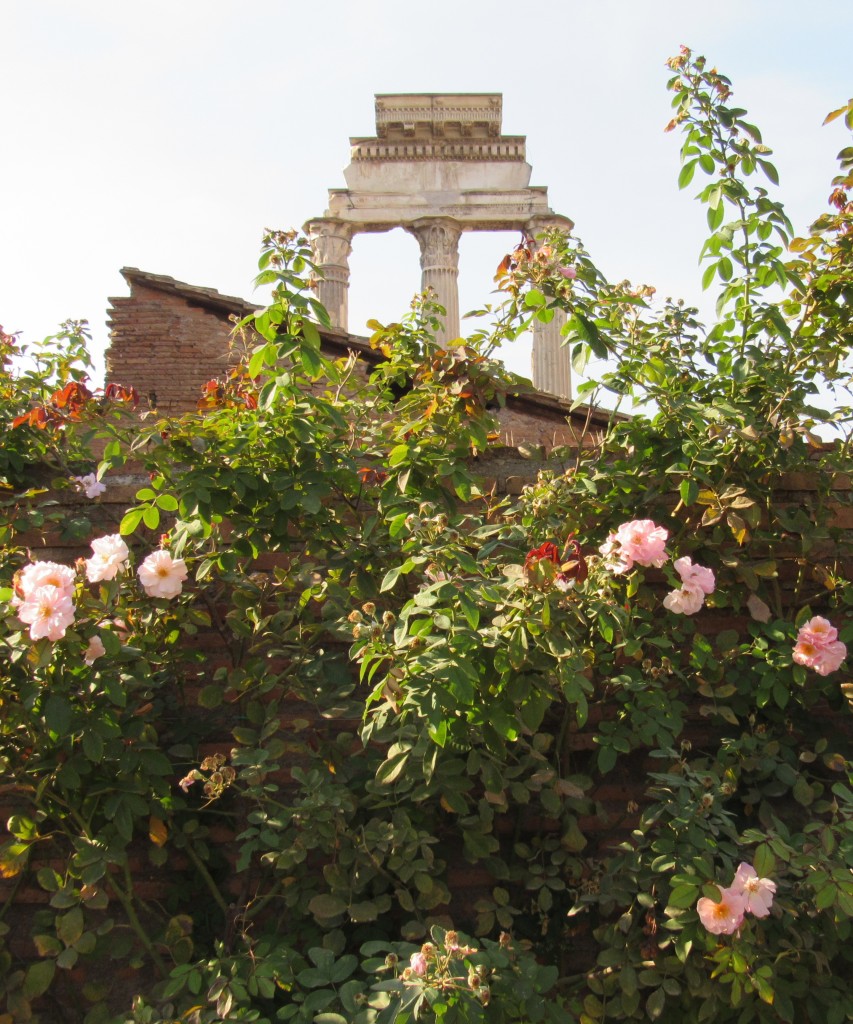
Roses held a great number of meanings in Roman culture 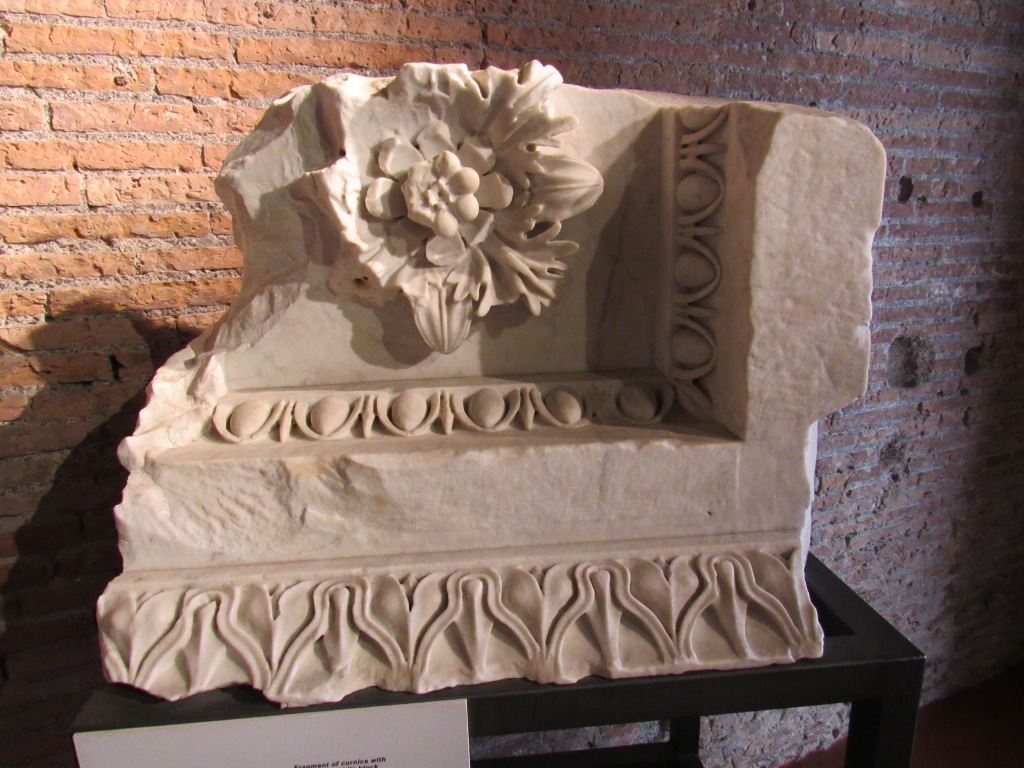
Plaster roses in architecture would have kept people sub rosa 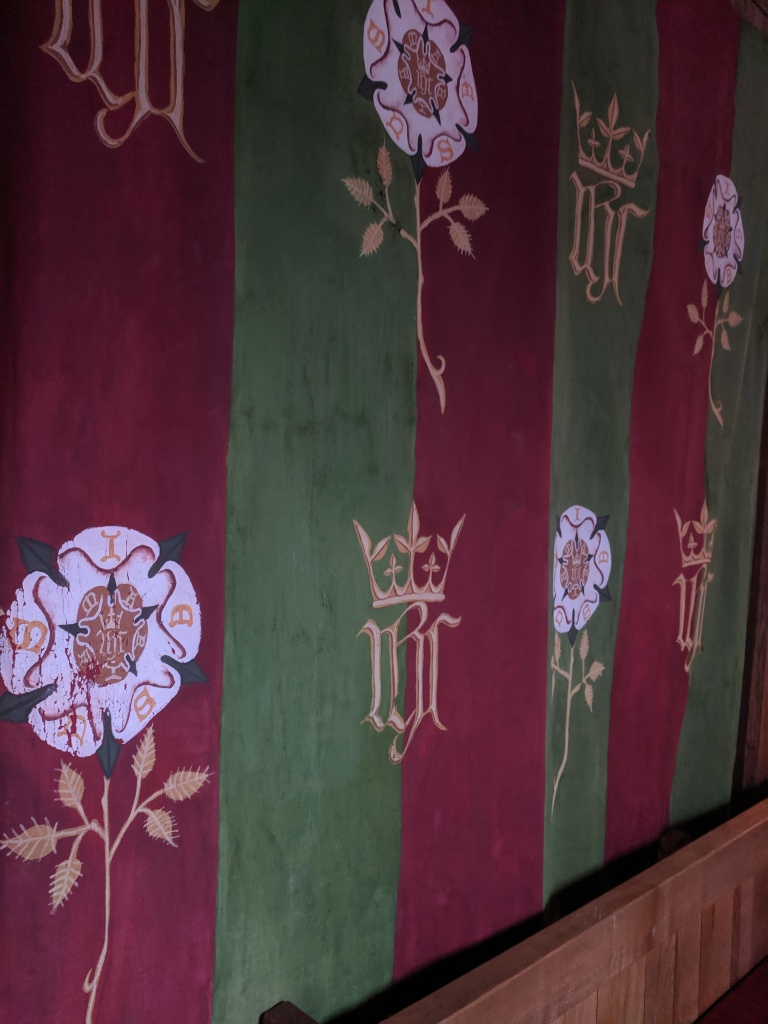
Roses also appeared frequently in tapestries and hangings
The most traditional colours for roses, as depicted in art but also as recounted in lore, are white and red. These colours become a binary as the symbols of the York and Lancastrian families during the War of the Roses; in many stories, including a Jewish folktale, white roses represent innocence and honesty (like the faithful wife Zilliah), while red roses represent fury and cruelty (like Hameul, who wrongly accuses his wife of adultery). Perhaps a more familiar story showing this binary is Lewis Carroll’s Alice in Wonderland, where fearing the wrath of the Queen of Hearts, the gardeners paint the mistakenly-planted white roses red.
The idea of originally-white flowers being turned red is a common thread in the folklore of roses. Rather than Aphrodite’s blood, in early Christian belief it was the blood of Jesus that stained white roses and created red ones. The thorns of the plant allude to the crown of thorns placed upon him at his crucifixion; the five petals symbolise his five injuries. Other Christian stories tell of roses blushing at Eve’s kiss, then growing thorns when she and Adam are expelled from Eden. These stories, while all ending with hope restored, contain an element of danger or suffering. Perhaps this is why, when mixing red and white one gets pink or ‘rose’, and why the phrase ‘to look through rose-coloured glasses’ conveys an optimism which overlooks the bad.
Roses also carry another binary: the beauty of their flowers versus the threat of their thorns. This binary was understood and became emblematic for medieval knights: during contests or warfare, knights would wear roses as a reminder that gentleness should accompany ferocity, and beauty would reward their prowess in combat. Like a rose’s thorns protecting its flower, a knight would fight to defend their kingdom or their beloved. Other folktales also view the rose’s thorns as a virtue: in Cherokee myth, a rose plant grew up and around Nunnshi to protect her from pursuers; in a Greek folktale, a prince uses roses taken from the bower of his sleeping princess to ward off his enemies. Another phrase could find its origin in this idea: to ‘come up smelling of roses’ means to rise from an unpleasant, ‘prickly’ situation to a more ‘rosy’ position.
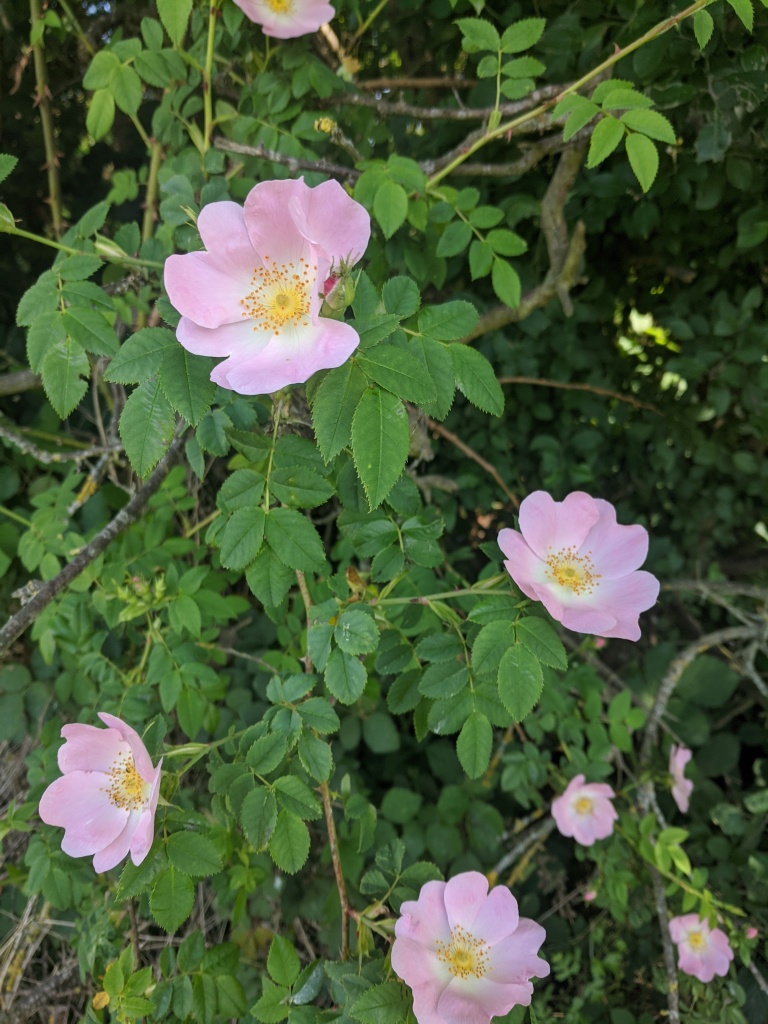
‘Dog’ rose roots were used to cure the bites of mad dogs 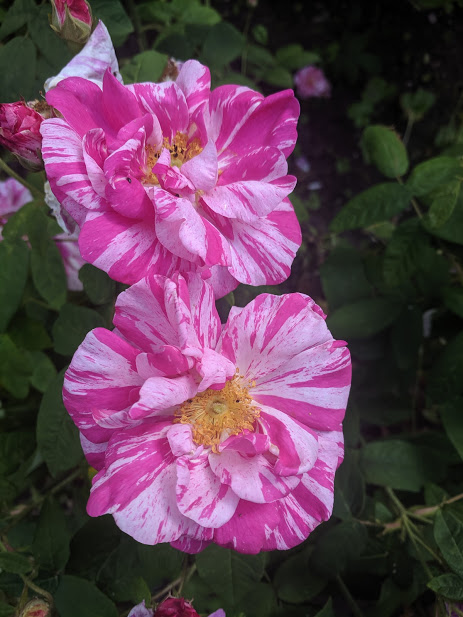
Roses have since been bred into many species and cultivars 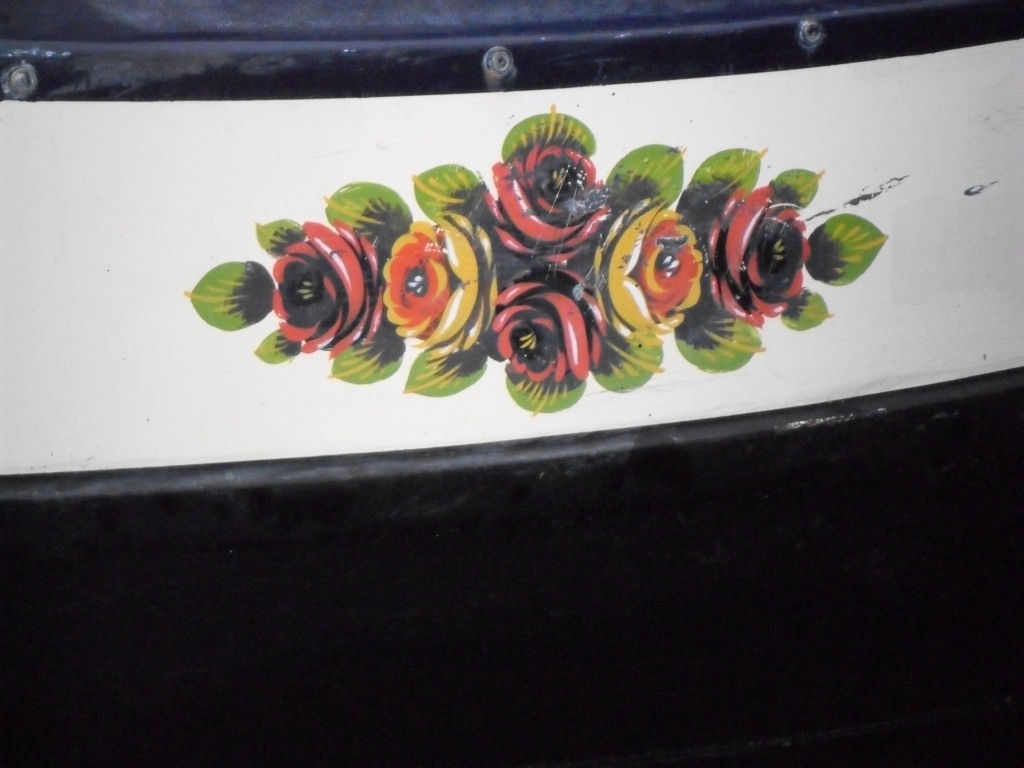
Roses feature frequently in canal art on the side of narrowboats
Now to move away from tales of gods and rulers, and to turn to the more humble folk beliefs and uses of the rose.
The most obvious use for the rose is as a fragrance. Rose petals were boiled into an oil or balm as early as the 8th century BC, to perfume bodies both dead and alive. Roses were a favoured element of potpourri in Tudor England: it was kept in rooms and on the person in pomanders, to eliminate the bad smells they thought caused illnesses such as the plague. Rose vinegar has also been used to relieve headaches, and the scent of roses was believed to relieve melancholy. Burning rose-scented candles could fragrance a room, while a sachet of dried rose petals could freshen laundry. Some folk uses have, of course, died out as beliefs have been dropped, such as the use of wild rose roots to cure the bites of mad dogs, giving them the name ‘dog roses’! The fruit of the dog rose (the rosehip), however, was often foraged during the Second World War as a good source of vitamin C, when citrus imports to England were less possible.
Today, we still value roses for their scents, but also their beauty. Roses have been bred into hundreds of thousands of cultivars, and can be bought in all the colours of the rainbow. The modern hybrid called the English Rose was developed to give the flower even bigger blooms, and stronger fragrance. Roses feature frequently in art, and nowhere quite as effectively as in canal folk art. Painted in bright colours with only a few elegant brushstrokes, bunches of roses often adorn the sides of narrowboats. Yet despite the wealth of lore, from all over the world and across many centuries, concerning the rose, the origin of roses in canal folk art is relatively obscure. Perhaps it is just their universal beauty that makes them an enduring favourite.
There are so many brilliant resources about roses! I recommend…
- The Secret Language of Flowers, by Samantha Gray
- Plant Lore and Legend, by Ruth Binney
- Brewer’s Dictionary of Phrase and Fable, by E. Cobham Brewer (a huge tome, but good for so many bits of folklore research)
- Rose Folklore, from Rose Magazine
- The Rose in Myths & Legends, from Ludwig’s Roses
- The Complete Rose Colour Meanings Guide, from ProFlowers (often this is one of the main things people write about when it comes to roses, but it is a lengthy list and differs from source to source – here’s one good list)
- Floriography: The Language of Flowers in the Victorian Era, from ProFlowers (a good list of resources, covering different flower meanings and how Victorians talked through bouquets)
- Canal Folk Art, from Canal Junction (a good list of resources about life on canals!)
For more Folkdays content, see my blog.
One thought on “Folkdays: Rose Lore”